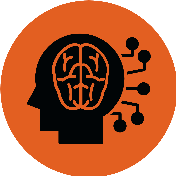Time-Series Forecasting with Deep Learning: Tools and Use Cases
 Anton R Gordon
Anton R Gordon
Time-series forecasting has emerged as a critical application in sectors ranging from finance and healthcare to supply chain and energy management. With the advancements in deep learning, this domain has seen significant breakthroughs, enabling businesses to make accurate predictions and informed decisions. Anton R Gordon, a prominent AI architect, has been instrumental in applying cutting-edge deep learning tools to time-series forecasting, creating robust models that are both scalable and effective.
Understanding Time-Series Forecasting
Time-series forecasting involves predicting future values based on historical data. It requires understanding trends, seasonality, and noise in data to generate accurate predictions. Traditional methods like ARIMA and Exponential Smoothing have been widely used, but they struggle with complex datasets and non-linear relationships.
According to Anton R Gordon, deep learning has changed the game by offering models capable of capturing intricate patterns and dependencies in large datasets. These models excel in handling multivariate time-series data and adapting to dynamic changes in real-world environments.
Tools for Time-Series Forecasting
Anton frequently employs the following deep learning tools to enhance forecasting capabilities:
Long Short-Term Memory Networks (LSTMs):
LSTMs are particularly effective for time-series tasks as they can retain information over extended periods. Anton uses LSTM models to capture temporal dependencies and mitigate issues like vanishing gradients, enabling accurate predictions over long time horizons.
Convolutional Neural Networks (CNNs):
While CNNs are traditionally used for image processing, Anton applies them in time-series forecasting to extract spatial features and patterns, often combining them with LSTMs for hybrid models.
Transformer Models:
Transformer architectures, such as those found in models like Temporal Fusion Transformer (TFT), offer unparalleled performance in capturing attention-based relationships in time-series data. Anton integrates these models to forecast complex datasets with varying temporal dependencies.
TensorFlow and PyTorch:
These frameworks are Anton’s go-to tools for implementing custom deep learning models, allowing flexibility and scalability for different forecasting scenarios.
Use Cases in Time-Series Forecasting
Anton R Gordon highlights several impactful use cases of time-series forecasting with deep learning:
Financial Forecasting: Predicting stock prices, market trends, and risk management.
Energy Demand Prediction: Modeling electricity consumption to optimize grid operations.
Healthcare Analytics: Predicting patient admission rates and resource allocation.
Supply Chain Optimization: Forecasting demand to streamline inventory and logistics.
Conclusion
Anton R Gordon’s expertise in time-series forecasting with deep learning showcases the transformative potential of these models. By leveraging advanced tools like LSTMs, CNNs, and transformers, he provides solutions that are not only accurate but also adaptable to evolving datasets. Businesses looking to enhance their predictive capabilities can draw inspiration from Anton’s methodologies, which bridge the gap between theory and practical application.
Subscribe to my newsletter
Read articles from Anton R Gordon directly inside your inbox. Subscribe to the newsletter, and don't miss out.
Written by

Anton R Gordon
Anton R Gordon
Anton R Gordon, widely known as Tony, is an accomplished AI Architect with a proven track record of designing and deploying cutting-edge AI solutions that drive transformative outcomes for enterprises. With a strong background in AI, data engineering, and cloud technologies, Anton has led numerous projects that have left a lasting impact on organizations seeking to harness the power of artificial intelligence.